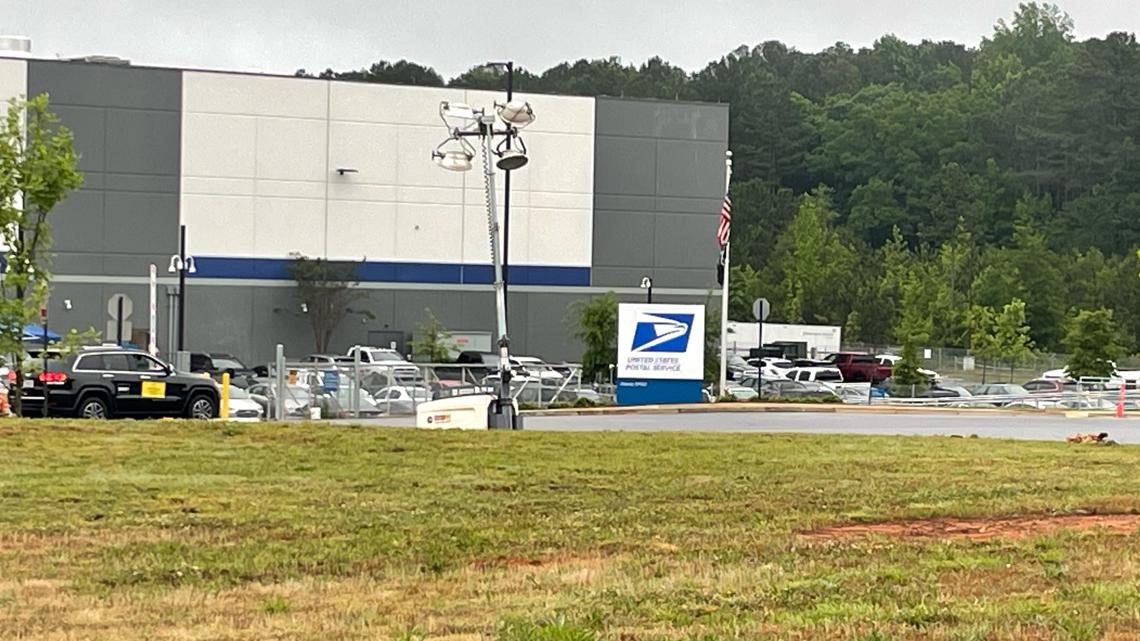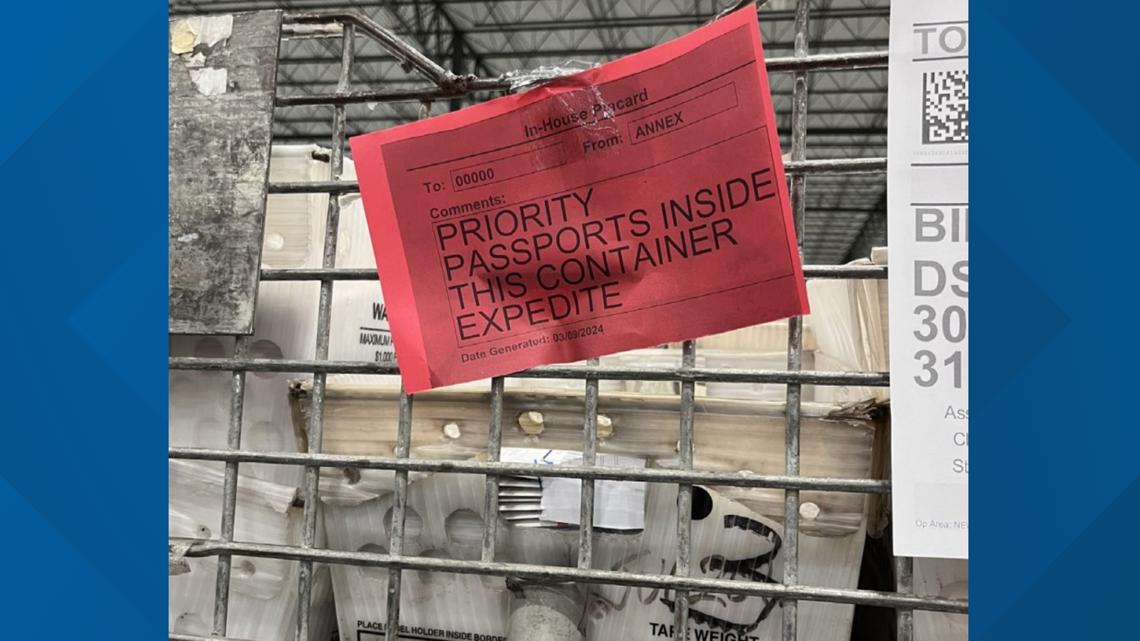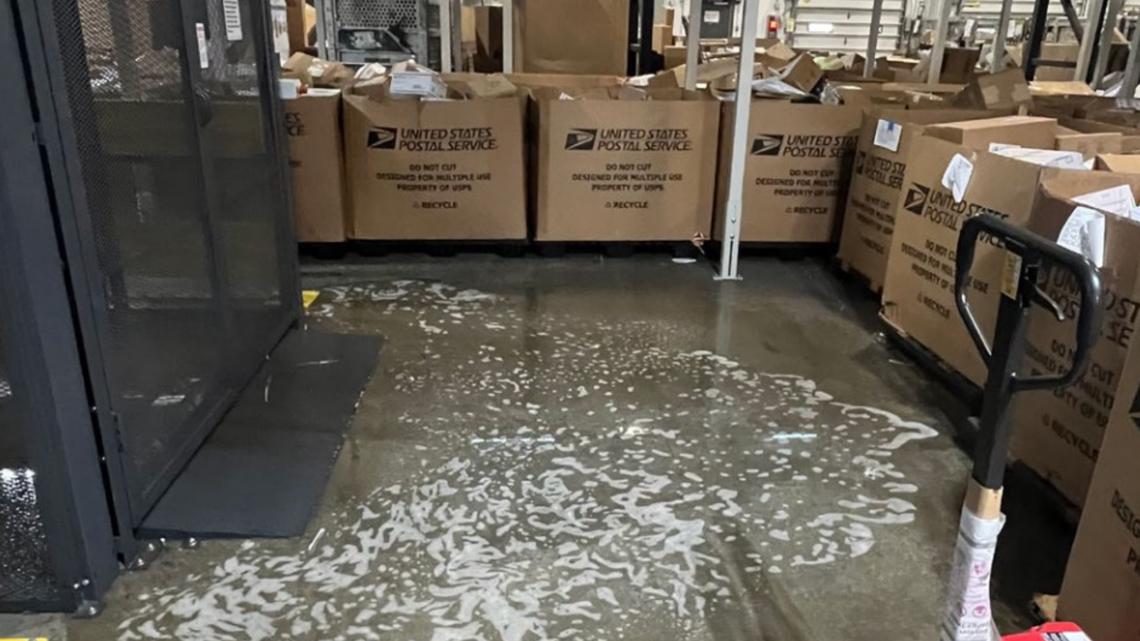ATLANTA — An audit into the effectiveness of the new metro Atlanta USPS regional processing and distribution center in Palmetto that has been at the center of Georgia's mail delays has now been released.
The Office of Inspector General for the United States Postal Service released the report on Wednesday. The objective was to assess the operational launch of the facility. Officials made their observations of the facility from March through June of this year.
In general, the report said that USPS faced serious challenges that caused "an immediate and significant decline in service performance and increased overtime costs in the Atlanta region" with the new distribution and processing facility in Palmetto.
Below is an overview of these findings and the United States Postal Service's response to each.
Finding 1: Lessons learned from the Atlanta RPDC launch
According to the report, it alleged the postal service distribution center did not build on lessons learned from the launch of a Regional Process Distribution Center (RPDC) in Richmond to address barriers to success like staffing, training and supervision.
The report said that USPS completed several tasks before launching the facility. For example, in late October 2022, it started modernizing the empty warehouse to meet needs and standards. It also installed a new package sorting machine—the MaRS—that became fully operational in January 2024. Challenges identified with this system's initial performance will be addressed in an upcoming report.


In general, USPS management completed a post-implementation review 40 days after the launch and identified the below challenges:
- Management did not plan transportation schedules far enough in advance to support regional operations.
- Management did not align inbound mail volume and dock operations to reduce truck driver wait time.
- Management did not define a clear process to update mail transportation equipment labels to address significant changes in the network.
- Processes were not set up before the launch to efficiently handle all mailstreams.
- Employee availability within the region was not properly determined before the launch.
- Management did not train all employees on equipment or operating processes before the launch.
"The issues increased overtime expenses and contributed to a significant decrease in service performance scores," the report wrote.
The audit found that mail service performance in the Atlanta region declined significantly after the launch in February 2024.
Postal Service Response
In a response letter, USPS said that management disagreed that lessons learned from the Richmond RPDC were not used to address barriers for the Atlanta facility and reiterated how the Atlanta campus relied on 11 different facilities to process mail in the region.
"The unexpected challenges related to the scale and complexity of this implementation were identified and mitigated," they wrote.
Finding 2: Challenges executing operations with new plant design
The audit said that the Postal Service struggled to execute operations with the new facility design. There was not enough space for personnel to unload trailers, move mail into the facility, stage mail operations and dispatch ongoing mail. Also, the Postal Service increased the volume of mail at the facility under a new "Go East/Go West" initiative that consolidates cross-country mail. It wrote that this "made dock congestion even worse."


It said that trucks and trailers were waiting hours to load and unload. For example, the Postal Service is expected to load and unload 960 trailers daily. However, according to the audit, in the 12 weeks after the launch, they averaged 720 trailers per day.
"Even with fewer than expected trailers, the Postal service was unable to quickly check-in and unload trailers due to the congestion on the loading dock," it wrote.
The audit said that in the three months after the launch, 21% of 977 drivers with GPS had to wait an average of four hours before they were able to be checked into the facility and provided an assignment.


Postal Service Response
They agreed that there were unexpected issues.
"Management took immediate and effective correction action to alleviate wait times and congestion," they wrote.
Finding 3: Staffing challenges resulted in inefficient operations
Although the Postal Service worked with labor unions to staff the facility, there were still several staffing challenges. The audit said this "exacerbated the other operational challenges and negatively impacted service."
According to the audit, most of the employees did not stay after their temporary assignment ended. Around 1,500 employees started at the facility on its launch date, but the audit alleges that most did not receive training or know the operational layout of the facility. For example, it alleged that employees were unfamiliar with scanning arriving trailers and mail containers, how mail should flow through the plant, how the mail processing equipment worked and the different classes of mail, products and machine capabilities.


"Further, employees were reassigned from the other facilities in the region to the RPDC, leaving the Atlanta LPC understaffed and unable to hire pre-career employees due to labor agreements to help bridge the gap," the audit wrote.
Postal Service Response
Management disagreed with this finding but recognized that there were staffing challenges that they were working to resolve.
"We disagree with assertion that we were not aware of the challenges and/or not actively working to resolve," they wrote.
Finding 4: Management was not in place to supervise operations
The audit found that the United States Postal Service did not fill all management positions at the facility before the launch and said that vacant positions persisted for at least four months after the launch.


It said that 57% of necessary front-line supervisory positions were vacant at the launch. It also said that they placed employees in temporary management positions and brought in experienced management staff from around the country to assist. However, these managers were unfamiliar with the layout and planned operations.
It also wrote that the Postal Service did not have a manager of processing support in place until four weeks after the facility launched. In addition, they said they observed issues due to insufficient supervision.
"Throughout the facility, we found mail that had not moved; was not staged and organized in a first-in, first-out order; or was not placarded correctly," the audit wrote.


Postal Service Response
Management said they disagreed with this finding.
"There are very specific HR policies and procedures in place that govern the placement of managerial employees," they wrote.
They said that timeline requirements created staffing challenges. They also noted that travel distance, time and communication costs between facilities discouraged voluntary moves. They recognized that there were vacant supervisory and management positions at the launch but that it was known, and they supplemented them with temporary ones.
Finding 5: Mail processing facility review process was not followed
The audit said that the Postal Service completed public outreach at two of six mail processing facilities before they consolidated operations into the Atlanta RPDC.
"The Postal Service is legally required to provide adequate public notice to communities affected when closing or consolidating a processing facility," the audit wrote.
The Postal Service has a mail processing facility review process to comply with the law. This has to be done when consolidating all originating or destination mail distribution operations from one facility to another. As part of the process, the Postal Service has to communicate these impacts to stakeholders, hold a public input meeting and allow written comments to be submitted. After a meeting, they must take any input into account before making a final decision.
They said that multiple facilities met the review process but that not all were done.
"When the Postal Service's policy for conducting MPFRs is not clear and service changes are not communicated to affected areas, it harms the Postal Services reputation and public trust," it wrote
Postal Service Response
Management wrote that they disagreed with this finding and that the review process was followed correctly for this particular facility. It was not needed for other facilities because they were in the same service area.
"If an MPFR is not needed, the Postal Service is not required to communicate impacts to stakeholders or hold a public input meeting to allow submissions of written comments," they wrote.
The full report, including management's comments in response to the audit, can be found in the document below.

